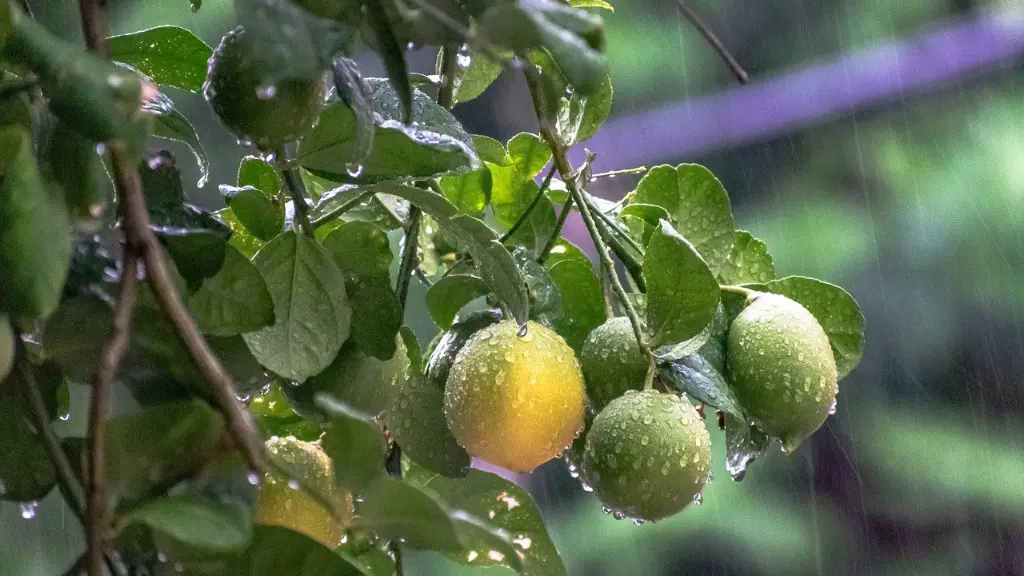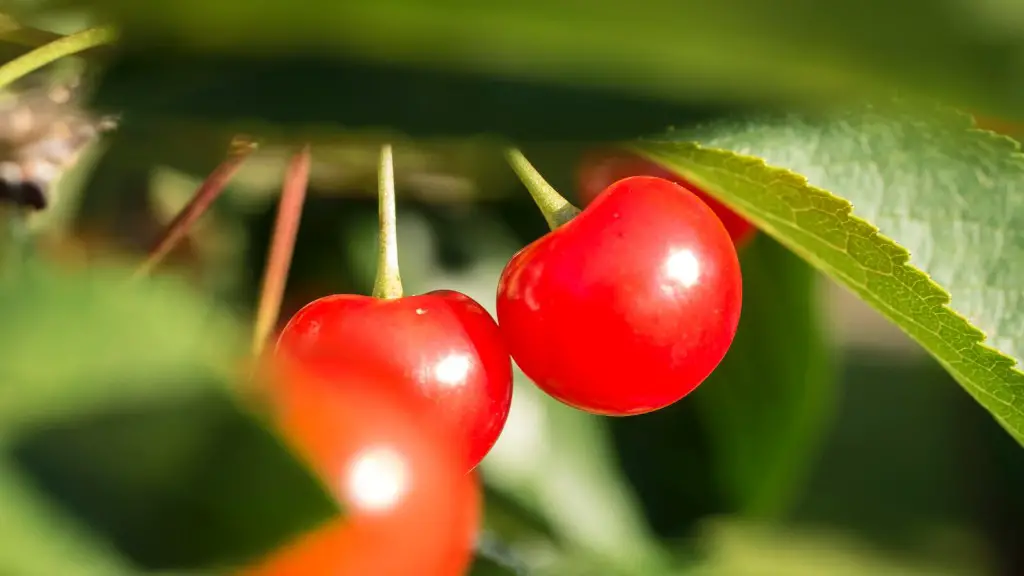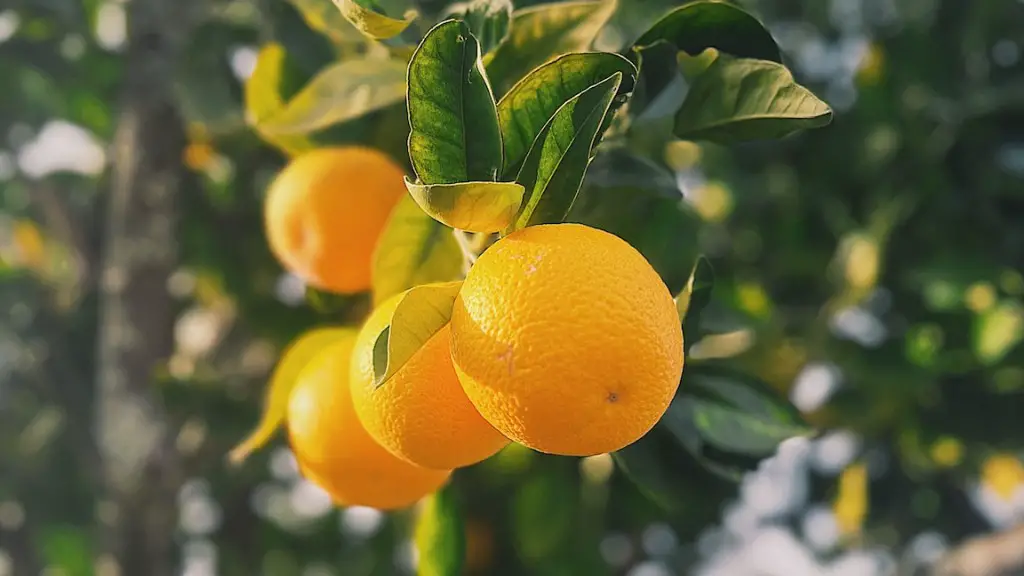The lemon tree is an iconic representation of Mediterranean cuisine. It’s an evergreen fruit tree that produces tart and juicy fruits with distinctive yellow skin. Lemons are used in cooking, baking, cleaning, and even in a variety of medicinal remedies. But when is the best time for you to move your lemon tree outside?
For climates with mild winters, a garden lemon tree can stay outdoors all year round. In more severe climates with freezing temperatures, the lemon tree should be brought inside during winter and out again in spring. It’s best to keep the tree outdoors while temperatures are above freezing and make sure that it is sheltered from strong winds, heavy rains, and direct sunlight.
When shopping for a lemon tree to plant outdoors, it is important to buy a variety that is suited to your climate. You should also ensure that it is disease resistant. Gardeners should monitor their lemon trees for signs of pests, such as aphids and mites. Regular pruning and fertilizing should also be employed to help the tree remain healthy and vigorous.
It is advisable to move your lemon tree outside gradually for two to three weeks. You can start by putting the tree in a shaded area for a few hours and bringing it back inside. Then, increase the amount of time that the tree spends outdoors each day until it can be left outside overnight. This helps the lemon tree acclimatize to the environment and prevents it from suffering shock.
Once the tree is outdoors, it is important to keep it watered on a regular basis. The tree should also be carefully monitored for signs of nutritional deficiencies, such as yellowing leaves, that may indicate the need for fertilization. Lemon trees should be kept well-pruned to encourage growth and keep it manageable. Regular pruning also helps to improve the quality and quantity of fruit.
Identifying the Optimum Conditions for Your Lemon Tree
In order for lemon trees to thrive, they must be in an environment with the right temperature, light, and humidity. Lemon trees prefer temperatures between 17 and 29°C and will be adversely affected by temperatures above 30°C. So, if your climate is warm, you must ensure that the tree receives some shade during the hottest parts of the day. The tree should also be located in an area of your garden that receives at least six hours of sunlight daily.
Lemon trees also require regular watering. The soil should be kept moist but not too wet as this can lead to root rot. Additionally, the tree must have adequate drainage to prevent waterlogging. The tree should be watered more frequently during periods of intense heat and when flowering and fruiting are taking place.
Humidity is another important factor in the lemon tree’s growth and health. Low humidity levels lead to water stress in the tree and cause leaf drop. Therefore, the tree should be misted regularly in conditions of low humidity. It is also a good idea to create an area of high humidity around the tree by placing a layer of mulch or compost around its base.
Finally, it is important to regularly monitor and inspect the tree for signs of stress, such as yellowing leaves, or pests and diseases, such as aphids and mites. Early detection of issues can help to prevent them from becoming serious problems that can be difficult to treat.
Repotting Your Lemon Tree
Sometimes, lemon trees can become too large for their existing pots, in which case they need to be repotted. If possible, the best time to repot the tree is spring or summer. Make sure to use a potting mix that is designed for citrus trees and contains adequate drainage. When repotting, it is important to keep roots healthy by gently untangling them and trimming as necessary. The trunk of the tree should also be pruned and lightly fertilized to encourage growth.
When repotting the lemon tree, make sure to choose a pot that is slightly larger than the one previously used. This will allow the tree plenty of room to grow. The pot should have adequate drainage holes and should be filled with soil that is designed for citrus trees. The tree should then be watered thoroughly and placed outside in a place where it will receive adequate sunlight.
Once the lemon tree is repotted, it should be monitored for signs of nutritional deficiencies or stress. You can also choose to fertilize the tree with a citrus tree fertilizer. If the tree is producing too much fruit, you can reduce the size of the fruit crop by removing the youngest blossoms. This will ensure that the tree is not overproducing.
Caring for a lemon tree can be quite rewarding, especially when the tree is producing tart and juicy lemons. When you keep an eye on your tree and take the necessary steps to ensure it is getting the right amount of light, water, and nutrients, you should get a good crop of fruits in return.
Protecting Your Lemon Trees From Extreme Weather
When the weather turns extreme—whether hot or cold—your lemon tree may need protection. During hot spells, it is important to make sure the tree is adequately shaded from the sun. The tree should also be watered more frequently during hot spells to prevent it from suffering stress. Mulch can be placed around its roots to conserve moisture and fertilized with a citrus fertilizer.
In cold climates, it is important to take the tree indoors during the winter months. The temperatures should be kept between 17 and 29°C and away from any blasting heating systems. The tree should also be protected from drafts. During inside winter care, it is important to check regularly for pests, such as aphids and mites, that can easily find their way inside your home.
If you bring your lemon tree indoors, you might find that it goes into dormancy. A dormant lemon tree will produce little new growth but should still be watered and lightly pruned. In the springtime, when temperatures start to rise again and the threat of frost has passed, the tree can be carefully moved back outside.
If the lemon tree is planted in the ground, extra care must be taken to protect it from the cold. A layer of mulch around the base of the tree helps to insulate it from cold temperatures. It is also a good idea to cover the tree lightly with a cloth if temperatures are expected to drop below freezing. When temperatures start to rise, the tree should be uncovered again.
Extreme weather can also be a problem for your lemon tree. If temperatures become too hot, the leaves can burn and the tree can suffer shock. If your area is prone to storms, it is important to provide your tree with some protection by placing it in an area that is sheltered from the wind. Finally, it is essential to provide adequate water during extreme weather.
Monitoring and Troubleshooting Your Lemon Tree
Lemon tree problems can manifest in a variety of ways and can be caused by pests, diseases, nutrient deficiencies, or environmental conditions. Some of the more common lemon tree issues include yellowing leaves, poor fruit production, and slow growth. As a gardener, it is important to monitor your tree regularly for signs of stress or illness.
When issues with your lemon tree arise, it is important to act quickly. If you can identify the cause, you may be able to take the necessary steps to rectify it. If pests or diseases are present, insecticides and fungicides should be used. Nutrient deficiencies can be corrected with fertilizer, and environmental problems, such as insufficient light or water, can be addressed.
It is also important to remember that lemon trees must be pruned regularly to encourage healthy growth and maximum fruit production. All dead, diseased, or crossed branches should be removed. Additionally,you should prune the tree to encourage new growth and shape the canopy. When pruning, it is important to use sharp, clean pruning shears.
Although lemon trees can be quite resilient and robust, they can still be susceptible to stress. By understanding the needs of your lemon tree, providing it with ample light, water, and nutrient, and keeping an eye out for signs of distress, you can ensure that your tree will flourish and produce a bountiful amount of lemons.




